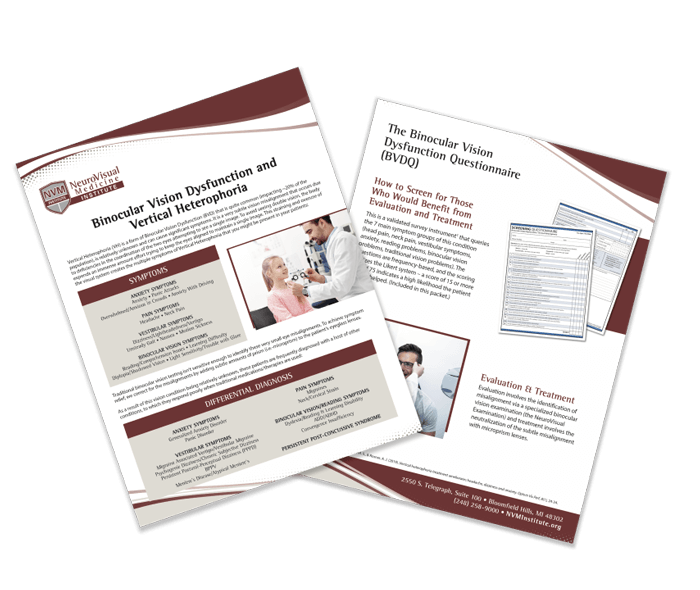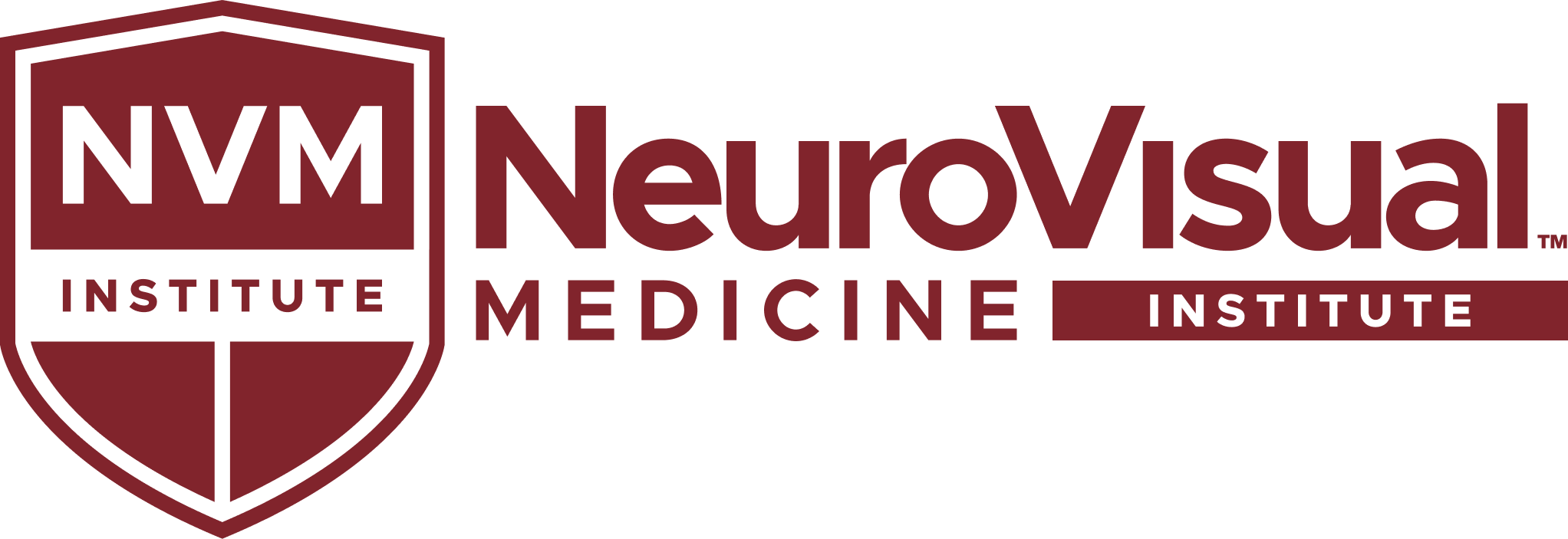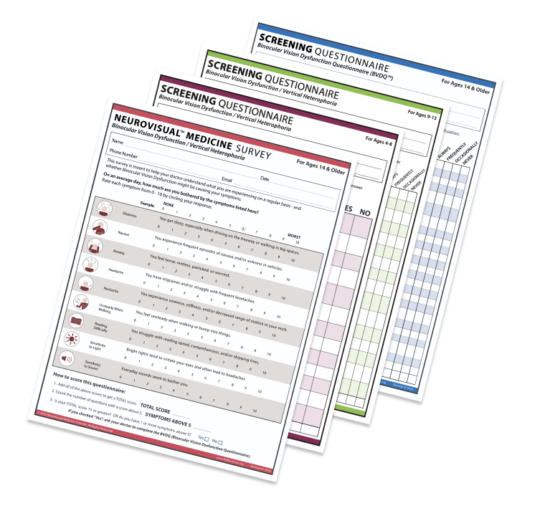Clinical Resources For Doctors
A New Approach to Phoria Screening & Testing
Introduction
There are hundreds of patients currently in your practice who suffer from the symptoms of subtle eye misalignments like Vertical Heterophoria. The tools on this page will give you the ability to identify these patients.
The 5-Minute Cover Test™
While the BVDQ informs the doctor that the patient would benefit from a NeuroVisual Examination, the 5-Minute Cover Test demonstrates this need to the patient.
- This step-by-step test can be done at home or in your clinical setting
- Patients who likely have a binocular vision issue will experience relief by being made monocular
- Those who experience relief during this test will have a clear path to feeling better, beginning with a NeuroVisual Exam


Introduction to BVD & VH
So your patient is complaining of migraines and anxiety – is it BVD or VH? Binocular Vision Dysfunction (BVD) and Vertical Heterophoria (VH) are two of the least understood conditions in optometry today. This guide will give you a primer about what to look for and what to do next!
- How to screen for symptoms of BVD & VH
- Identify the differential diagnoses of BVD & VH in your patients' case histories
- Powerful tools take the guesswork out of diagnosis – BVDQ & 5-Minute Cover Test
The BVDQ™

-
The BVDQ™
The BVDQ™ is the most powerful and reliable tool developed to identify those who most likely have Vertical Heterophoria and will respond to treatment. This validated survey instrument asks a wide array of questions from the 7 main symptom groups, resulting in the identification of many VH sufferers. The BVDQ is the first step for every patient on their NeuroVisual Medicine healing journey. Having the power to identify these patients and transform their lives (i.e - 80% reduction in symptoms) is something NeuroVisual Medicine Specialists cherish.
Take the Next Step
After trying these two tests with your patients, you will quickly become aware of the large number of your patients who could benefit from a NeuroVisual Examination and treatment with microprism lenses, as well as the finacial impact that caring for this patient population could have upon your practice. Don't miss out on this opportunity to transform your patients lives: become a NeuroVisual Medicine Specialist and learn how to diagnose and successfully treat their Vertical Heterophoria.

